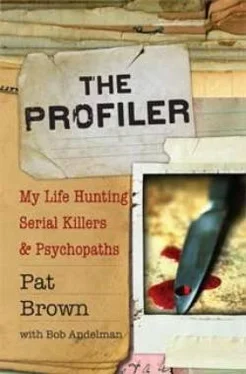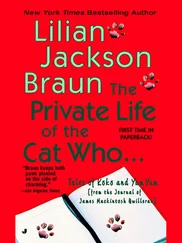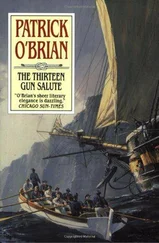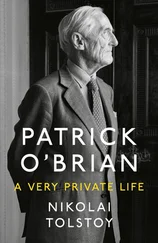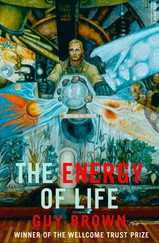My caseload increased more dramatically and rapidly than it ever would have if I hadn’t gone on television and if I charged a lot of money and nobody knew who I was.
In the old days, the only way to be a profiler was to be in the FBI. Police departments didn’t hire profilers. They didn’t have any money for that. Local law enforcement brought FBI profilers in to work on only the most extraordinary, perplexing cases. But, because of my presence on television and the Internet, I was approached by law enforcement from across the United States as well as families who saw me on television and hoped I could revitalize a cold case stuffed in a drawer in the file room of a local police department.
Television instantly awarded me more clout with detectives because they could hear for themselves what I had to say about cases and how I analyzed them.
My husband was wrong. I was becoming exactly the professional I swore that I would be-although, I have to admit, for all the declaring I did that I would succeed, I can’t quite believe things worked out as well as they have.
PART 2.PROFILING CASES
CHAPTER 5.SARAH:MURDER BEHIND THE BAR
The Crime: Torture, rape, homicide
The Victim: Sarah Andrews, an army private stationed at a military base in the Western United States
Location: Nightclub parking lot
Original Theory: A drug deal gone bad, involving a local gang
Overlooking crucial evidence often throws an investigation off course, and my first case as a criminal profiler proved how true this could be. It was 1996, the year the Sexual Homicide Exchange became a reality.
The 1987 unsolved homicide of army private Sarah Andrews, found brutally murdered behind a bar, was brought to me courtesy of Manny, a bounty hunter-private investigator I met during a class in bail enforcement. Manny insisted the murder was drug-related, and had spent many, many investigative hours funded by the family. He wanted a criminal profiler to support his theory and credibility.
This was the first time since investigating the Anne Kelley murder that I talked to the family of a homicide victim. I heard in detail what the mother and father of a murder victim go through as Sarah Andrews’s parents recounted the years of agony they’d suffered from the time they heard that their daughter was brutally murdered.
Sarah’s crime scene was ugly-horrifying-because she was not only raped and left in a parking lot nearly naked, but two coat hangers had been wound around her neck and mouth like the halter of a horse-that’s how she was killed. The coat hangers cut back into her mouth and pulled on both sides of her face, and the other part was around her throat. The murderer twisted it together, strangling Sarah to death. She was brutalized, internally as well as externally. The ending of this girl’s life was torture.
For parents to think of their child being abused like this, being killed in such a horrific manner, was heart wrenching. And then they had to endure years of agony hoping the murderer would be caught, listening to theory after theory, willing to jump at any little bit of hope, begging the police department for news only to keep hearing those famous words, “We’re working on it,” when, quite frankly, they may not have been working on it at all.
Listening to the grueling details that made up the last nine years of the Andrewses’ lives humbled me. Like that moment of realization at the victims’ meeting, I knew that I didn’t have it so bad. I may have my frustrations and struggles but I spent every day with all three of my children, happy and healthy. I didn’t exhaust my nights being tormented by nightmares of my daughter being murdered only to wake up and realize it wasn’t a dream.
Years had gone by and the police were willing to buy into Manny the bounty hunter’s scenario. That’s where my involvement in the story begins.
CASES THAT INVOLVE American military personnel, especially females, are particularly disturbing to us all. How wrong it seems that men and women who volunteer their lives to serve their country and defend our freedoms are then killed by their fellow citizens within their own country’s borders.
The violent criminal, of course, being a psychopath, couldn’t care less that his victim was doing him a favor, protecting the very system that allows him so much freedom and providing him a criminal justice system that treats defendants and the guilty better than do most countries in the world.
Sometimes, we see strife between couples within the military, boyfriend-girlfriend disputes. Military life can be a difficult adjustment, stressful at times, and relationships can be difficult to maintain. In the case of Sarah Andrews, there was no evidence of domestic disturbance between her and anyone else, so the detectives did not think she had a boyfriend who went nuts on her.
THIS WHOLE CASE was peculiar from the start. Sarah was murdered in 1987, and I was brought into it nine years later; it was the first case I officially took as a profiler. I can still look at the profile I did on this case and be satisfied with it, which I’m thankful for, because sometimes you look back on your early cases and think, “Oh, my God, did I not know what I was doing?”
It’s a good thing they didn’t know how new I was to profiling back then. One always feels a bit of guilt in the beginning of such a career because someone has to be the first “victim” and you can only cross your fingers and hope your work doesn’t suck too badly. Of course, the same is true for other professions-there is always a first patient, a first client, a first group of students. Someone gets to be practiced on for anyone to actually become a professional.
I opened the Sexual Homicide Exchange in 1996 and was starting to hear from interested people, even while continuing my studies. I met a few questionable characters at a class called “How to Become a Bail Enforcement Agent,” and when I finished, I got a cool bail enforcement badge and a jacket with the words “Bail Enforcement Agent” across the back. Manny the bounty hunter-private detective was lecturing at this course. When he found out that I was a criminal profiler, he glommed on to me. He figured he could manipulate me and get me to do his bidding. Families, when crimes go unsolved-and the Andrews case had been on file for an eternity by the time I came into it-will try anything. They become desperate, which is why most of them will try psychics at some point. They want answers for their deep misery; they want closure.
Unfortunately, their emotions are raw and they aren’t always thinking clearly, making them great marks for people who will try to make money from their pain and suffering. One of the reasons I always give my service pro bono is to eliminate the notion that I am using these people to make money. Most private detectives don’t apply this same standard. And while there are plenty of qualified, smart PIs who do good work, there are even more charging $50 to $100 an hour when the likelihood of solving a murder is slim to none. They accept retainers on cases for which the police don’t have any evidence to effect a prosecution and never will, but bleed the family dry nonetheless.
In a stranger homicide, where there is no clue who committed the crime, the PI could interview the entire city and still produce nothing. I’ve seen families lose as much as $40,000 hiring private investigators and rarely getting answers from them.
Manny convinced the Andrews family that he was working hard on investigating their daughter’s murder. He shared his suspicions about drugs being involved and how Sarah was likely taken and executed by a gang.
Even the police believed that was possible in the beginning, providing Manny a credible theory on which to base his investigative forays. There were a lot of drugs floating around the area; it was a major drug hub. Sarah had quite a few friends and relatives who were said to be involved in drugs, and some said Sarah herself could be caught up in something illegal. So the police immediately labeled the homicide a drug-related crime, stating, “We think that she was taken someplace and tortured, and then dumped in the parking lot. It had something to do with the drug trade.”
Читать дальше
